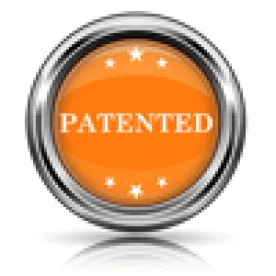Takeaway: An adequate showing that a reference is prior art as of its provisional application filing date under § 102(e ) requires a credible explanation as to how the disclosure in the provisional application provides sufficient written description support for the relied-upon features in the reference.
In its Decision, the Board denied the Petition, and found that Petitioner had not demonstrated a reasonable likelihood that it would prevail in challenging the patentability of claims 1-3, 6-15, and 18-22 of the ‘299 patent. Thus, no trial was instituted.
Petitioner had challenged claims 1-3, 6-15, and 18-22 of the ’299 patent. The ’299 patent discloses a television gateway for monitoring viewer activity in order to determine “whether television content is being viewed at the associated television or to detect whether the television is on or off.” If it is determined that a viewer is not viewing the displayed television content, various network resource conservation actions can be taken, e.g., “providing instructions to the content provider to halt delivery of all or a portion of the television content, or providing the television content at a reduced quality level so as to reduce the bandwidth required to transport the television content through the packet network.” The viewer may be alerted that a conservation action is taking or has taken place via a display on the television before, during, or after initiation of the action.
The asserted grounds of unpatentability were that: (1) claims 1-3, 6-9, 11, 15, and 19-22 were anticipated under 35 U.S.C. § 102(e) in view of Minnick; (2) claims 1-3, 6-11, 14, 15, and 18-22 would have been obvious under 35 U.S.C. § 103(a) in view of Riley and Minnick; and (3) claims 12 and 13 would have been obvious under 35 U.S.C. § 103(a) in view of Riley, Minnick, and Harrell.
In its claim construction, the Board concluded that the broadest reasonable interpretation of the recited phrase “transporting the television content over the packet network” was “conveying television content from one place to another over the packet network.” The Board disagreed with Patent Owner’s argument that the recited “television content” should be construed as “television programming such as movies or television shows, and not other types of data such as program guides, control messages or software because “the specification of the ’299 patent does not preclude a broader construction.” Relying on the plain and ordinary meaning standard, the Board interpreted the claim phrase “resource conserving process” to refer to “a process that determines whether to undertake an action to conserve resources.”
As for the asserted priority claim of the subject ’299 patent, the Board concluded that Patent Owner had “made a sufficient showing that all the challenged claims of the ’299 patent are entitled to claim the benefit of the filing date of the ’577 provisional application and the ’625 provisional application—namely, November 17, 2004.” The Board also found in Patent Owner’s favor by determining that Petitioner had failed to show a reasonable likelihood that it would prevail on its assertion that independent claims 1-3, 6-9, 11, 15, and 19-22 were anticipated under 35 U.S.C. § 102(e) by Minnick. According to the Board, Petitioner had not provided sufficient evidence to show that Minnick expressly or inherently discloses the recited “an action to conserve resources associated with transporting the television content over the packet network” set forth in independent claims 1 and 19, and the testimony of Petitioner’s expert Mr. Koperda did not make up for this deficiency.
The Board further found in Patent Owner’s favor in considering Petitioner’s proposed obviousness grounds under 35 U.S.C. § 103(a), namely, the alleged obviousness of claims 1-3, 6-11, 14, 15, and 18-22 in view of Riley and Minnick, and the alleged obviousness of claims 12 and 13 in view of Riley, Minnick, and Harrell. Where these proposed grounds fell apart, according to the Board, was in that Riley was not actually prior art under 35 U.S.C. § 102(e).
In this regard, Petitioner had asserted that each of the ’802 and the ’803 provisional applications sufficiently supported Riley’s claim for an earlier offensive 35 U.S.C. § 102(e) filing date of January 23, 2004. But the Board disagreed, finding that both the Petition and the supporting Declaration of Mr. Koperda notably lacked “a sufficient or credible explanation as to how the disclosures in the ’802 provisional application and the ’803 provisional application provide sufficient written description support for the features in Riley relied upon by Petitioner, particularly paragraph 58 of Riley.”
Cisco Systems, Inc. v. Constellation Technologies LLC, IPR2014-00914
Paper 11: Decision Denying Institution of Inter Partes Review
Dated: January 2, 2015
Patent: 8,464,299 B1
Before: Michael R. Zecher, Trevor M. Jefferson, and Peter P. Chen
Written by: Zecher
Related Proceedings: ARRIS Group, Inc. v. Constellation Techs. LLC, No. 1-14-cv-00114 (D. Del.); Charter Commc’ns., Inc. v. Rockstar Consortium US LP, No. 1-14-cv-00055 (D. Del.); Constellation Techs. LLC v. Time Warner Cable Inc., No. 2-13-cv-01079 (E.D. Tex.); Bockstar Techs. LLC v. Cisco Systems, Inc., No. 1-13-cv-02020 (D. Del.); In Re: Constellation Techs. LLC Patent Litig., MDL No. 2558, United States Judicial Panel On Multidistrict Litigation; IPR2014-00871; IPR2014-01085; IPR2014-00911; IPR2014-01179; and IPR2014-01180



 />i
/>i

